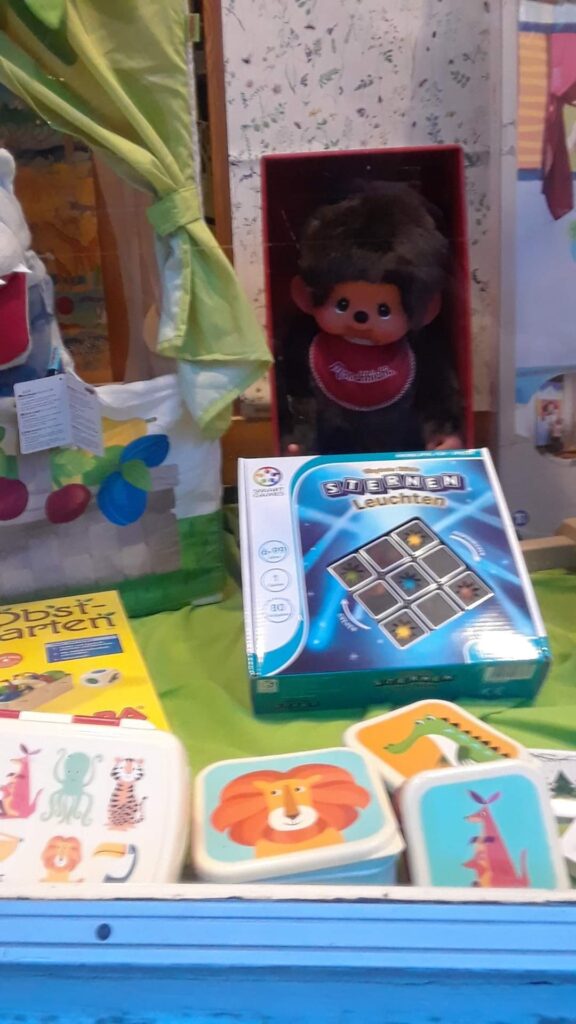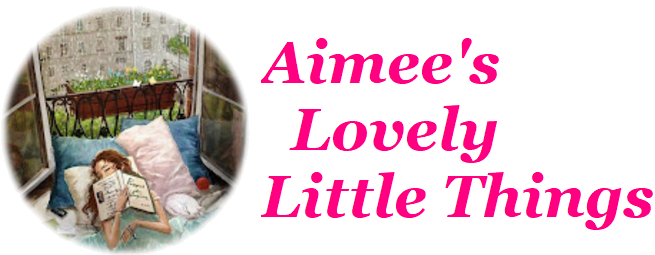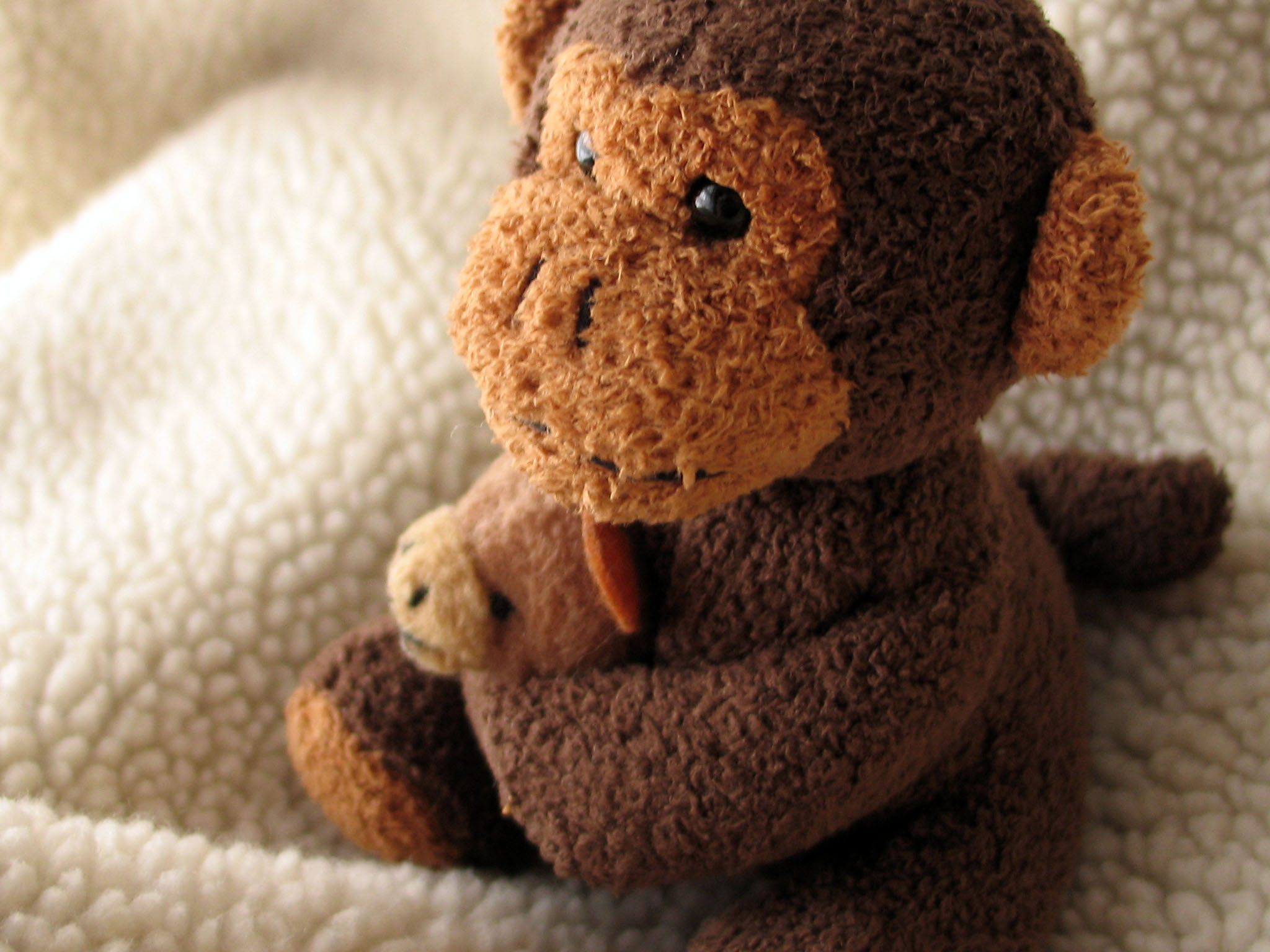I have always wanted to write about little stores in Zehlendorf, a little suburb in Berlin where I reside. Some months ago, I thought of sending mom a birthday gift. Since she seldom goes shopping these days, I decided not to buy her a handbag. There is a yarn store called “Cotton Fields” in my lovely neighborhood (“Handarbeiten und Geschenartikel” mean handicrafts and gift items), There I bought two balls of yarn of the Italian brand Ninfa von Katia of Concept Collection, and knitted her a long, warm scarf, which I mailed to our Hong Kong address.


It took two units to knit a long scarf. The mohair content makes the single thread yarn and the scarf feel so warm and soft. While it was not cheap to make the scarf, the mailing fee was even higher. It was still worth sending it across the globe because a handknitted scarf made by a loved one is priceless.
I was overwhelmed by the warm décor and the shopkeepers’ demeanors. I saw the plush toys lying around. Dazzled by the warmth and love, I picked up a teddy bear and asked the sales lady how much it was. It turned out that those are not for sale: they are there to keep the kids happy as their moms are picking their favorite yarns.
For many years my mom knitted many cardigans for me, sister and dad. She stopped as her eyesight deteriorated in her late middle age and beyond. I still recall those days when she carried her work-in-progress to the restaurants and discussed different knitting patterns with ah yee–auntie Chau who was always warm-hearted and who giggled a lot. Mom was very low-key and soft-spoken like me, and did not have that many friends. Some of dad’s colleagues and their wives nonetheless tried to befriend her so that they could learn from her some new patterns or how to knit a cardigan from scratch.
I learned knitting in primary school (before I was ten!) because of mom. I even joined an interest club on Saturday (we had school on alternate Saturdays) supervised by a teacher, who happened to be very strict and scolded students who missed a stitch or two (amateurs occasionally do that especially while working with fine yarns). Dad frowned whenever I took out the knitting equipment and work-in-progress. He found it a waste of time, which is quite ironic, as he said this while wearing one’s mom’s fabulous product. Looking back, I should perhaps have chosen a different interest group instead, given that mom was even more skilled than the teacher.
Yet knitting is never a waste of time, even at a time when it is much cheaper to buy mass-produced knitwear. These days, women kill their spare time playing with their cell phones. Very seldom do we find them knitting in public transport or restaurants while waiting for their food (well, especially Hong Kong, it would be a rare sight!) I do use my cell phone a lot, but mostly for work-related reasons. I admire any woman (or man!) who knits as a hobby. Knitting–and (even amateurish) handknitted products–bring back the joy of childhood and rekindles stale relationships.
***
“Tam tam” is the name of a Chinese/Asian percussion musical instrument. Interestingly, a Berlin-based chain toy shop in Germany named itself “Tam Tam.” There is a Tam Tam outlet on Teltower Damm 32, Zehlendorf, right next to the train station and not far from Cotton Fields.

The Tam Tam outlet is small but already carries a wide assortment of toys from different countries. I found my favorite Monchhichi plush toy from Sekiguchi company one day. Labelled a “Gift from an angel,” Monchhichi is (supposedly) able to evoke feelings of love and tenderness in its owners. I don’t know how exactly popular Monchhichi’s are in Europe. Apparently, the 18” Monchhichi was gone in a month, and only small-sized Monchhichi’s under 12” were still available.
Mom loves Monchhichi’s. She has an 18″ Monchhichi girl that sister brought home some 20 years ago, which she nicknamed “mui mui” (meaning: younger sister) (in fact, sister brought home also a Monchhichi boy, which she herself has kept it to this day). One day, the Monchhichi girl leg fell off, likely due to its age. Mom almost cried. She hurried to the supermarket to buy some glue and glued the little leg back to the body. From then on, she expressed concern every time I picked up this poor dear, “You must take good care of mui mui so that you won’t hurt her!”
Growing up, I played with plush toys. I was never a fan of Barbie or plastic human-shaped dolls. Nor was I into Lego’s and puzzles. There is also less of s stigma for teenagers and grown-ups to keep warm and soft plush toys. At a lucky draw, the top prize was a plastic Barbie-like doll–only cheaper-looking–and the teenagers were praying that their names would not get called. When sister brought home a huge Winnie-the-Pooh that she won at a lucky draw, I, then already a young adult–was overjoyed and did not hesitate to broadcast my joy.
I recall a monkey plush I bought a few years before Monchhichi’s arrived at my home (either at Mannings or Watson’s). I kept thinking about it lately until its expressionless little face and its little hand holding a banana became cuter than they really were, and I regretted allowing mom to give it away. I found out that it is for sale on eBay for a few hundred dollars. What surprised me was that it was also a toy from Sekiguchi, though nowhere as popular as Monchhichi’s are. Part of the appeal of Monchhichi’s is its weight: a Monchhichi doll is quite heavy relative to its size–much heavier than a plush toy of the same size–because the head, hands, and feet are made of plastic, although the rest are cotton wool-filled. The weight lend “substance” to the doll that a typical plush toy does not have, and carrying a 18-inch Monchhichi is more akin to carrying a real monkey baby.

